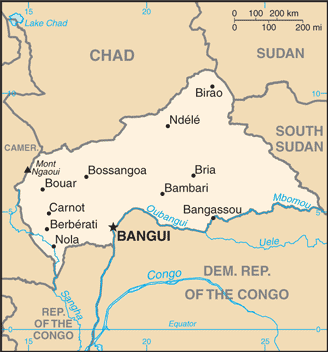In a follow-up on the hepatitis E outbreak in Bocaranga-Koui Health District, Central African Republic, since late October, 67 new cases of acute jaundice syndrome were reported,of which 51 were confirmed with hepatitis E virus infection.

As of 23 November 2018, a total of 119 cases of acute jaundice syndrome were recorded, including two deaths (case fatality ratio 1.7%). Of the 119 cases, 80 (67%) have been confirmed positive for hepatitis E virus infection by the Institut Pasteur Bangui.
The outbreak has largely been localized to Bocaranga City.
The outbreak of hepatitis E was declared by the Minister of Health on 02 October 2018. Epidemiological investigation revealed that the first suspected cases emerged in July.
Health officials report an increasing trend being observed lately.
Hepatitis E infection is found worldwide. The virus is shed in the stools of infected persons, and enters the human body through the intestine. It is transmitted mainly through contaminated drinking water. Usually the infection is self-limiting and resolves within 2–6 weeks. Occasionally a serious disease, known as fulminant hepatitis (acute liver failure) develops, and a proportion of people with this disease can die.
Outbreak News Interviews Podcast
According to WHO, every year, there are an estimated 20 million hepatitis E infections worldwide, leading to an estimated 3.3 million symptomatic cases of hepatitis E, and 56,600 hepatitis E-related deaths.

